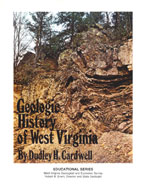Your Very Own Time Machine: Buying Your First Telescope
Yes, telescopes let you literally see back in time. From light years in the case of the nearest stars, to millions and billions of light years to distant galaxies. With a good telescope, the sights can be spectacular. So which one should you buy?
In conclusion, we recommend a 6" Dobsonian reflector. Our favorite make and model is the Orion XT which you can find for about $270 at telescope.com.
Oops! Did we just start with the conclusion? Most telescope articles start with lots of background on how scopes work, why they work, what to avoid, and so on. We thought it would be fun to start with what you really want to hear: the final recommendation.
Now that we have that out of the way, why do we make that recommendation, and what the heck is a "Dobsonian"?
Reflectors vs. Refractors
There are two basic kinds of scopes: refractors and reflectors. Refractors are the "classic telescope" we're all familiar with. These employ a lens which passes light through to your eye.
Reflectors use a large mirror, curved like a lens to capture lots of light and bounce it back up to your eye through a smaller lens.
Finally, there's compound telescopes. These have a lens on the front and a mirror on the back. In other words, they combine the design elements of refractors and reflectors. A good compound scope can provide a crisper view, but the beginner mostly appreciates that these types of scopes are more compact because light is bounced back and forth in a shorter tube. Maksutov-Cassegrains (or "maks"), Schmitt-Cassegrains, and Ritchey-Chretiens are just fancy names for different variations of compound-telescopes (sometimes also called "catadioptrics").
Of all these, reflectors are a great first scope choice because you get more bang for the buck. They are generally cheaper to produce which means cheaper to buy.
Also, reflector tubes are open on the viewing end. This matters because when you take a scope out at night, the lens or mirror warms the cool outside air which then swirls around and obscures your view. Eventually, the scope cools to the outside temperature and the air around the lens or mirror calms down. Reflectors tend to cool down faster because air is not trapped inside the tube.
The Cannon Telescope
Dobsonians are a type of reflector that use a cannon-style mount. Instead of using a tripod, Dobsonians rest in a sturdy base that swivels and rocks in the direction you want to view. Entry-level "Dobs" don't have motors, and aren't polar-aligned, so they won't track objects automatically. This is one of the Dobs' few disadvantages which in our opinion are far outweighed by the advantages.
With tripod mounts and motor-drives, you typically must level the telescope, align it to the north star, provide electrical or battery power, adjust your finder scope depending on the scope's position, and on and on. With a Dob, you just glide the tube by hand to point it at whatever you want to view.
The Feature You Really Want: Awesome Views
So what features do most first-time telescope buyers usually look for in a scope? Well, it has to look good, of course. A sparkling silver or black barrel on a nice tripod is a must. And then there's power. The more power the better to look deep into space!
But the point of a telescope is great views of the night sky, and none of these features will provide these—especially not "power." Why not? Because seeing distant objects like star clusters and galaxies is all about light, not magnification. Yes, the Andromeda galaxy is far away, but it's still very large. Did you know if your eye was sensitive enough, the Andromeda galaxy would appear 5 times larger than the full moon? That's right: even without a telescope, our nearest galactic neighbor is huge! And the same is true for most other interesting objects. The problem is not their size, but that they are exceedingly faint.
Big Eyes See Better in the Dark
So how do we brighten things up? How can we see better in the dark? Bigger eyes is the answer. In this case, a bigger lens or mirror on your new scope will let you see more interesting objects than any other feature. But wait, you say, wouldn't more power help too? Nope. You'd just make those faint objects appear bigger. And unfortunately, as you zoom in, objects grow dimmer. And blurrier. This is why astronomers build telescopes so large. Big eyes gather more light.
With a Dobsonian, you trade the cost of a fancy, complicated mount for a big mirror with big views.
And yes, a good-looking scope is nice, but remember it's more about what you're looking at, than what you're looking through. I can't emphasize enough that beginners will benefit most from a no-frills telescope with the largest possible mirror. Of course, you can get a big mirror in a complex catadioptric, but you'll pay at least four times more for the same size light-gathering ability.
Gadgets vs. Real Telescopes
If you want a gadget, buy that fancy-looking department store telescope. But if you want spectacular views of star clusters, planets, comets, galaxies and more, then buy a 6 to 8 inch Dobsonian from Orion Telescopes.
Why from Orion? In a nutshell: great prices, great customer service, and good quality products delivered fast. Celestron and Meade are good brands as well, but nobody beats Orion's offerings for the beginning to intermediate stargazer.
Ring Nebula photo courtesy: NASA








